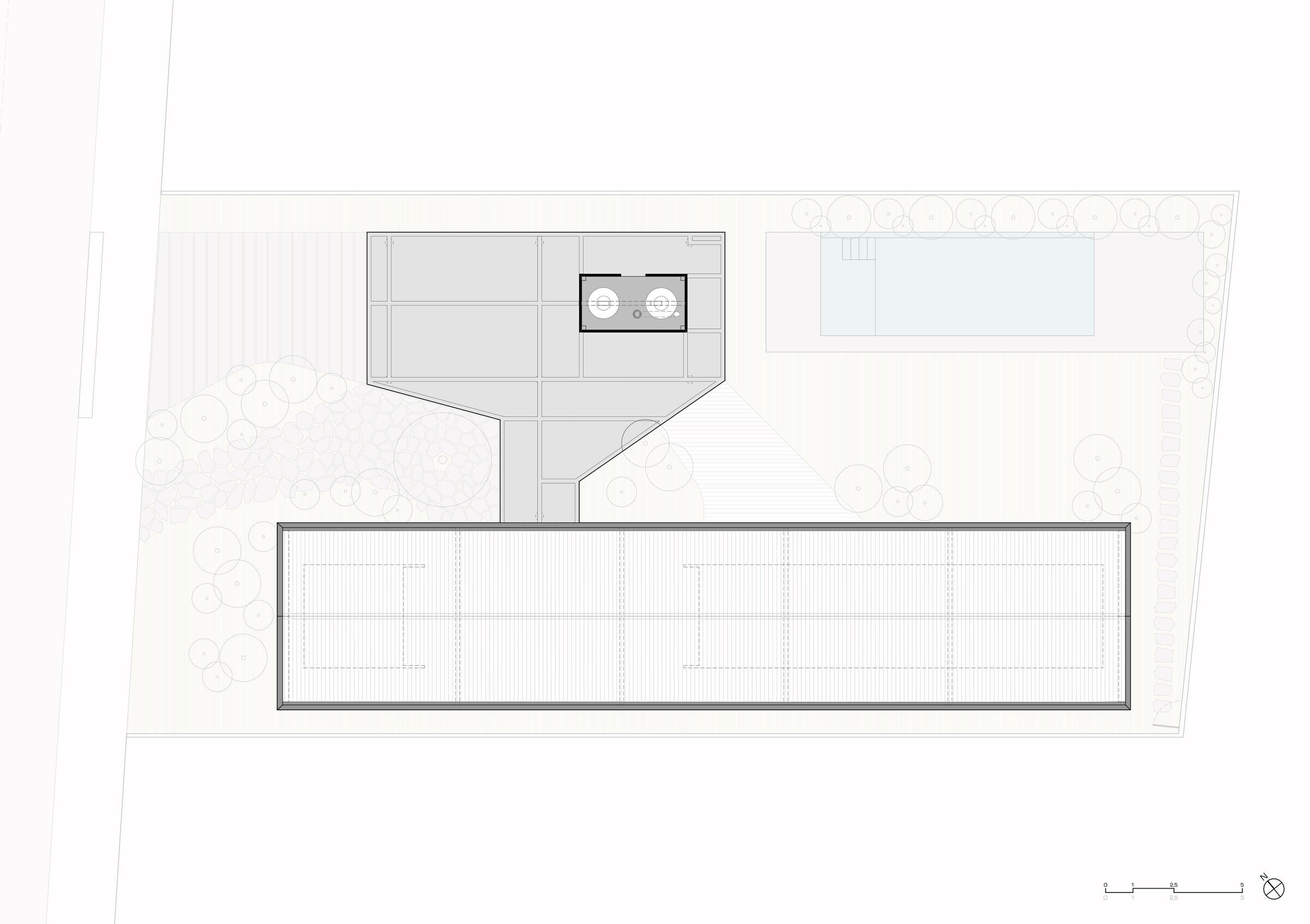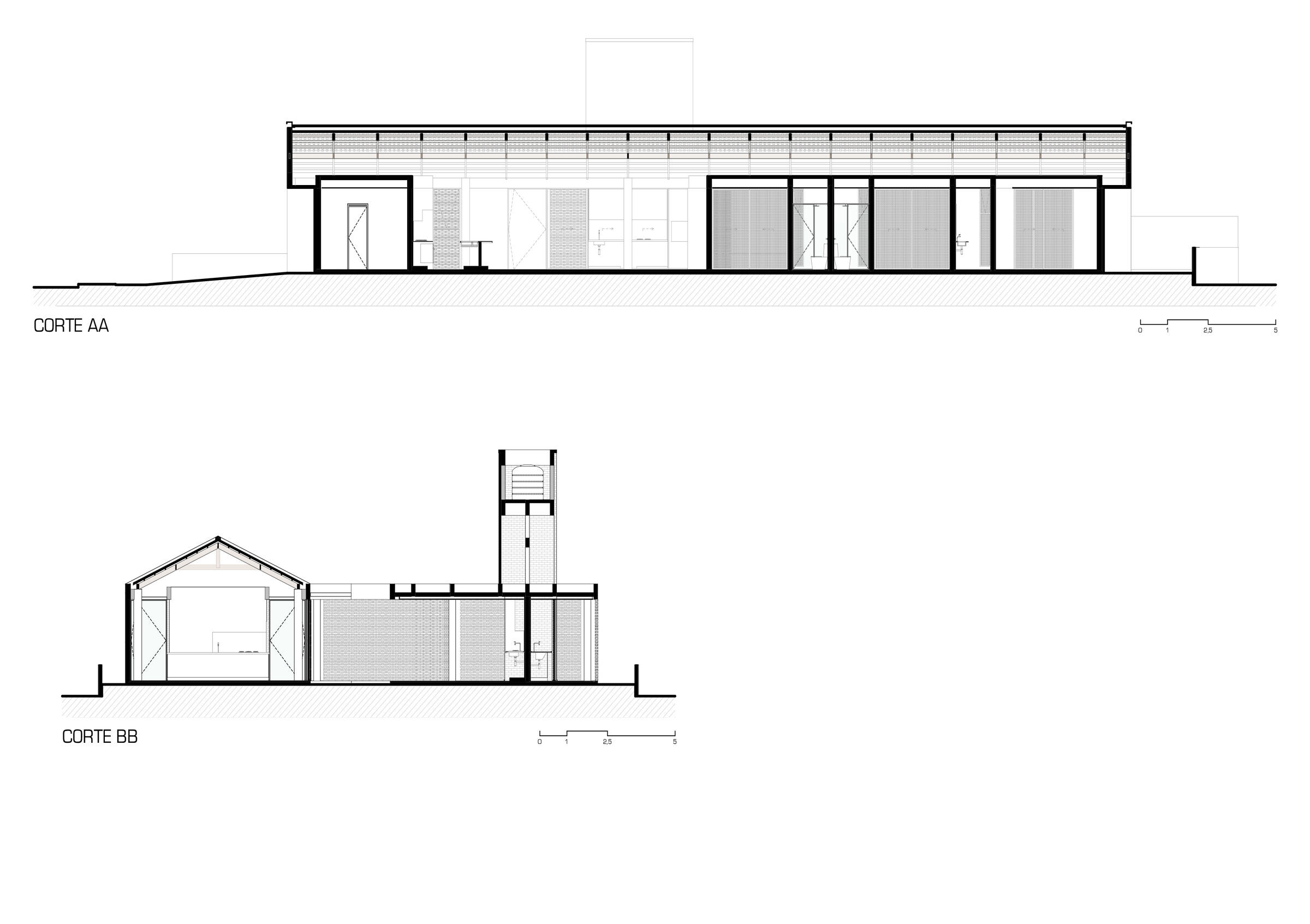The house, designed in a coastal area in the state of Sergipe, was initially designed for the summer but soon became the family's main residence.
With the help of the office, the choice of the site prioritized a location where there were no neighbors that could block the free ventilation in the house, a very important strategy for effective thermal comfort in this region of the country.
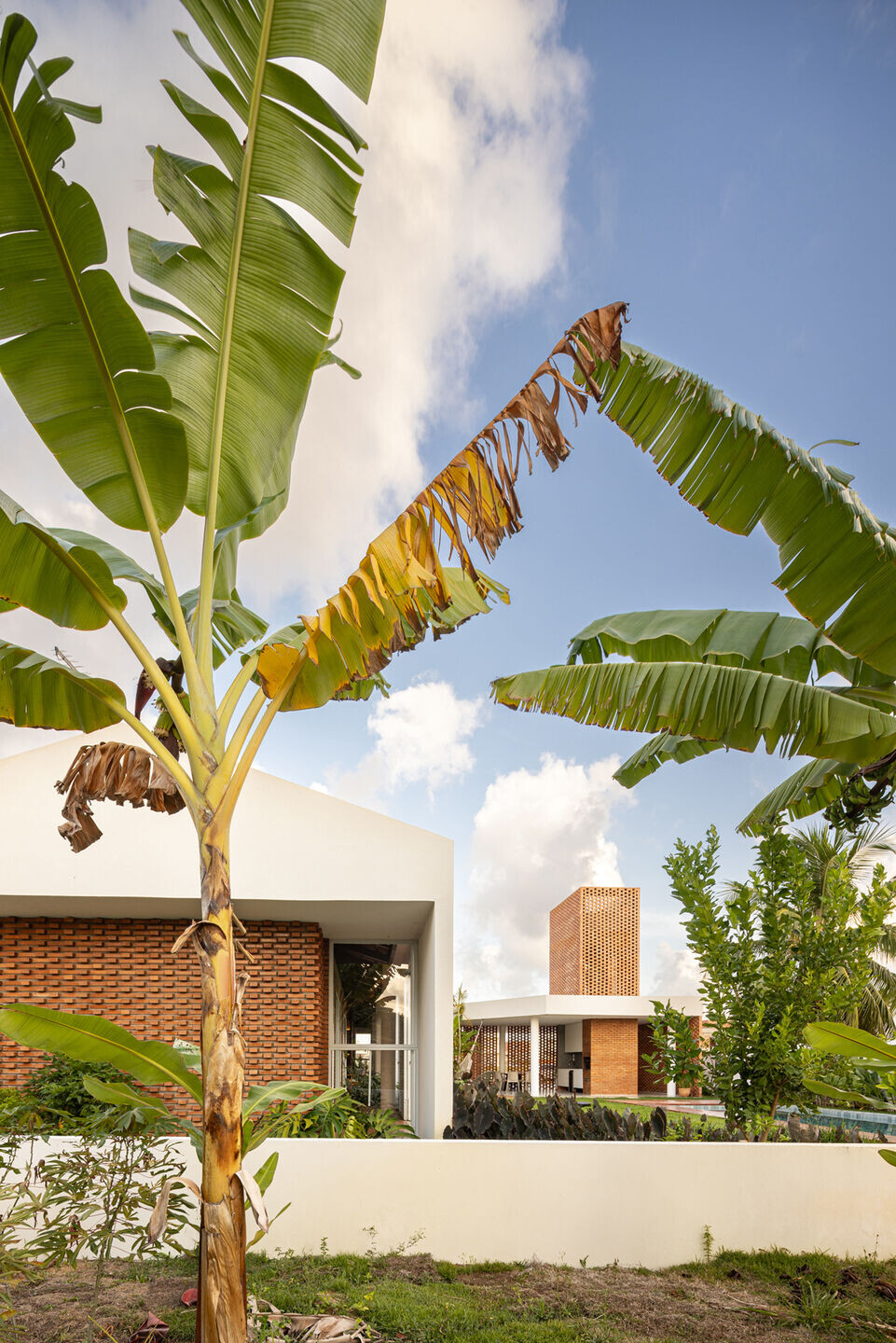
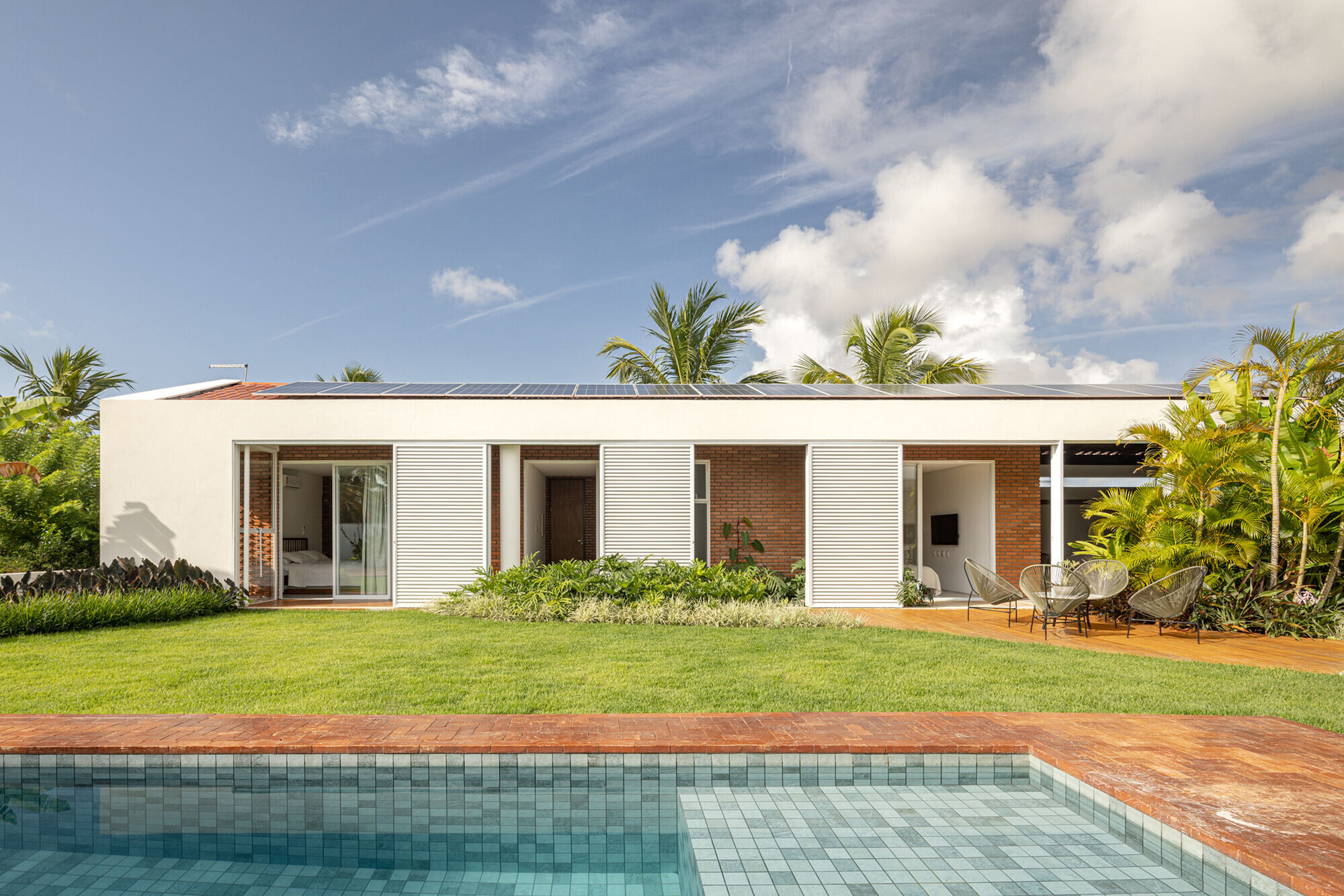
The house was defined in two blocks: a main pavilion that envolves almost the entire program of the house and another block, linked to this first one, configured by a polygonal slab with the gourmet area, service area and garage. The main block has two functional internal volumes (like shelters within a shelter), both of an intimate nature, separated from each other by the social program of the house, comprising the integrated kitchen, dining and living room. This block was protected by a large gabled ceramic roof, which provides ample ceiling height for social uses.
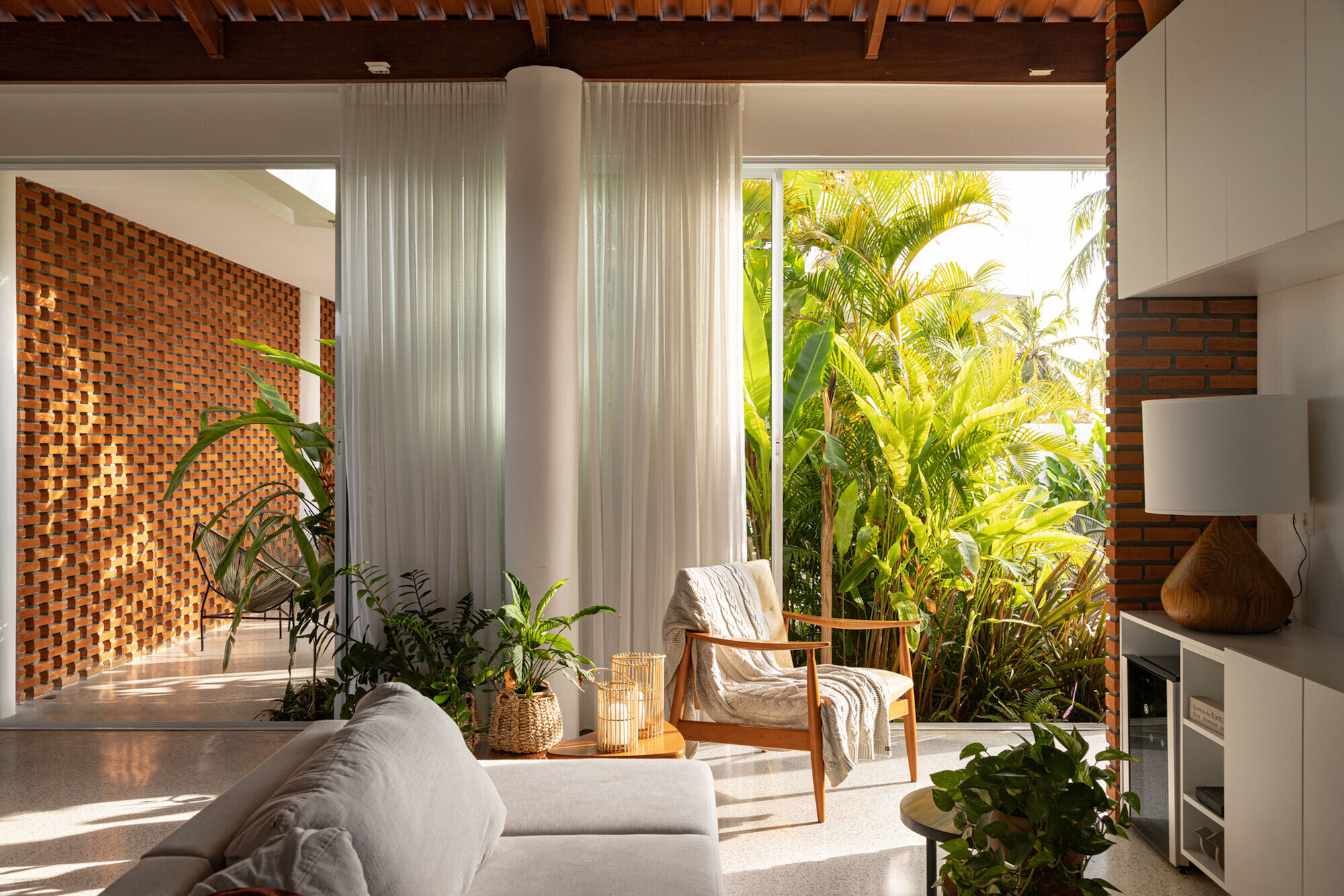
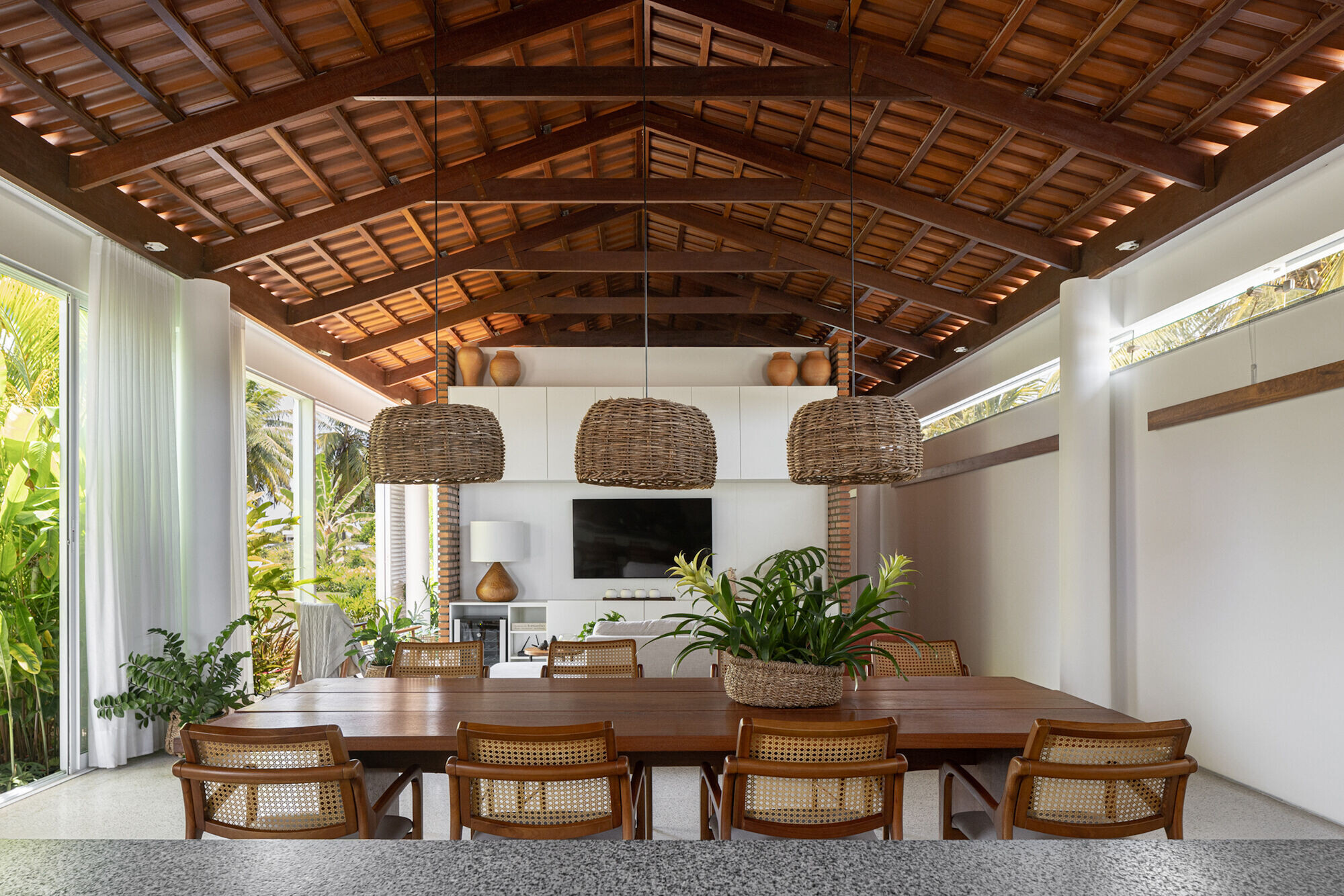
The design decisions tryed to equate the local constraints of excessive sunlight and wind direction, freely following the guidelines of the "Route to build in the Northeast" by Armando de Holanda, from Pernambuco. Eaves, balconies, sunshades, displacements between volumes to avoid thermal bridges were the strategies used to guarantee climatic comfort inside the residence. The site of the main block in the East - West direction protected the house from the massive incidence of the rising and setting sun. The north face, less susceptible to sunlight, received protection from brise-soleil, while the south side was practically opaque, with a long, narrow opening to help cross-air the house.
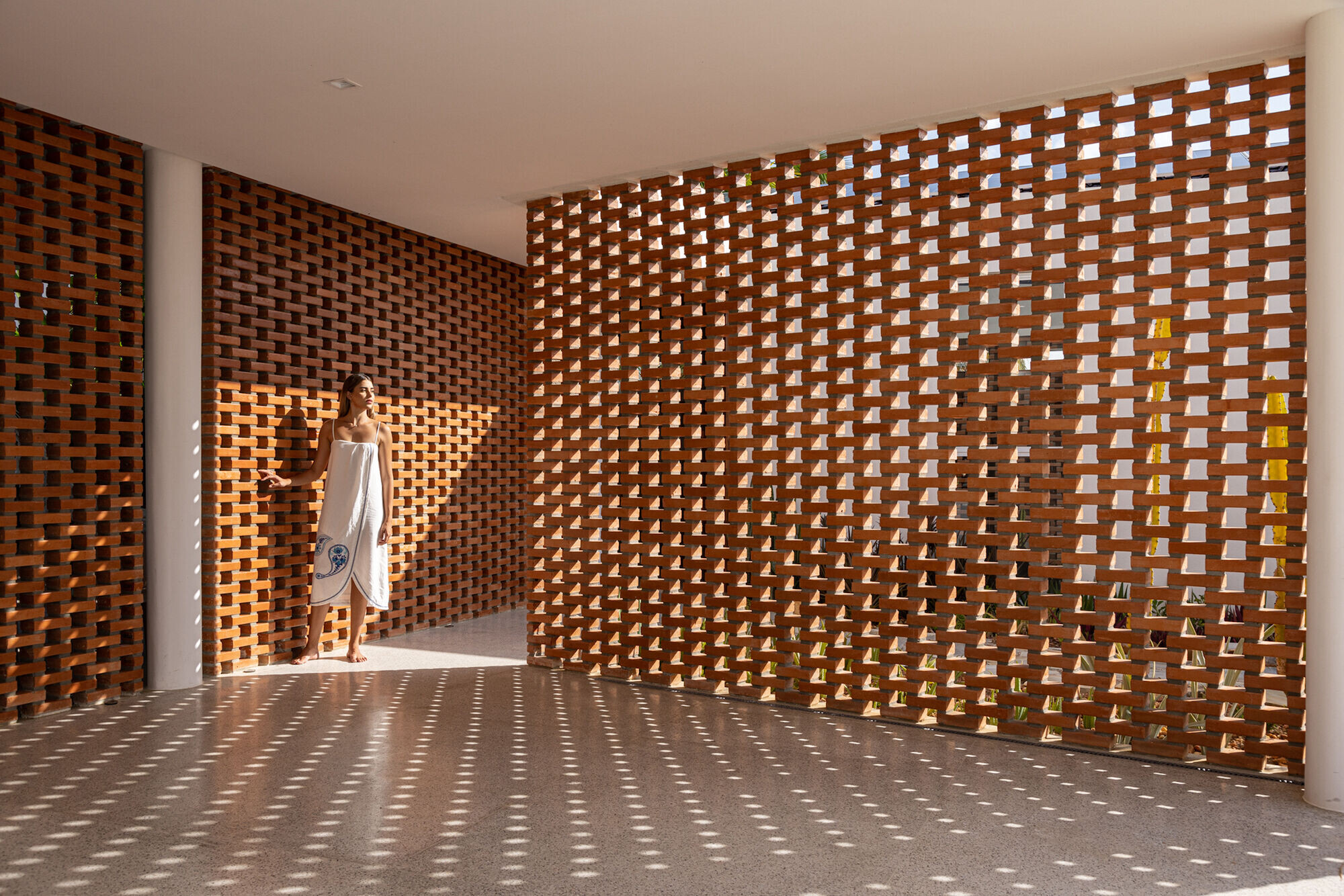
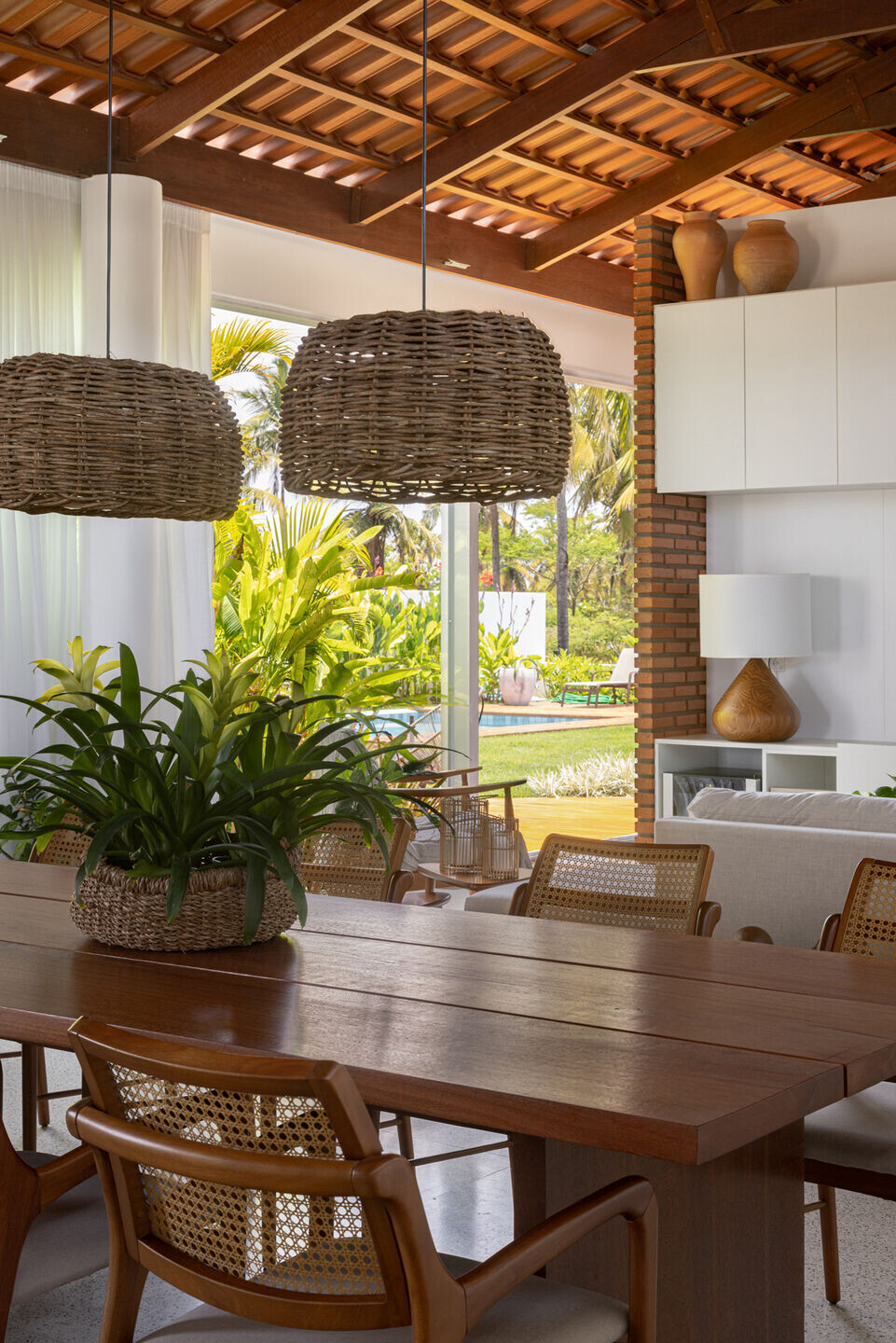
The presence of solid brick was very prominent, being used in different ways and in different situations, whether as a fence, floor or shading element. Together with the wood and the predominant white chroma on the walls, these materials run throughout the building and established a condition for perpetuity and ease of maintenance over time.
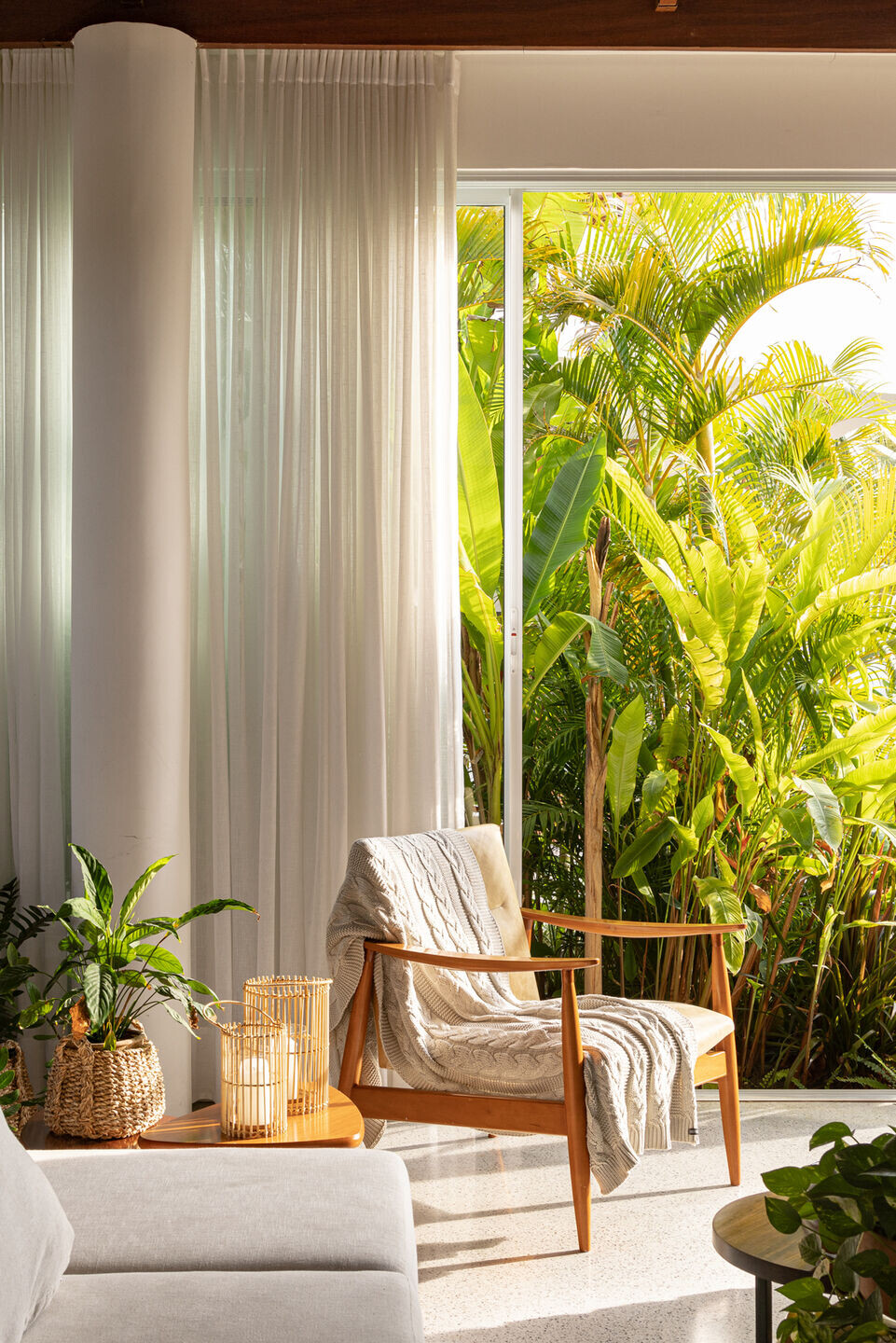
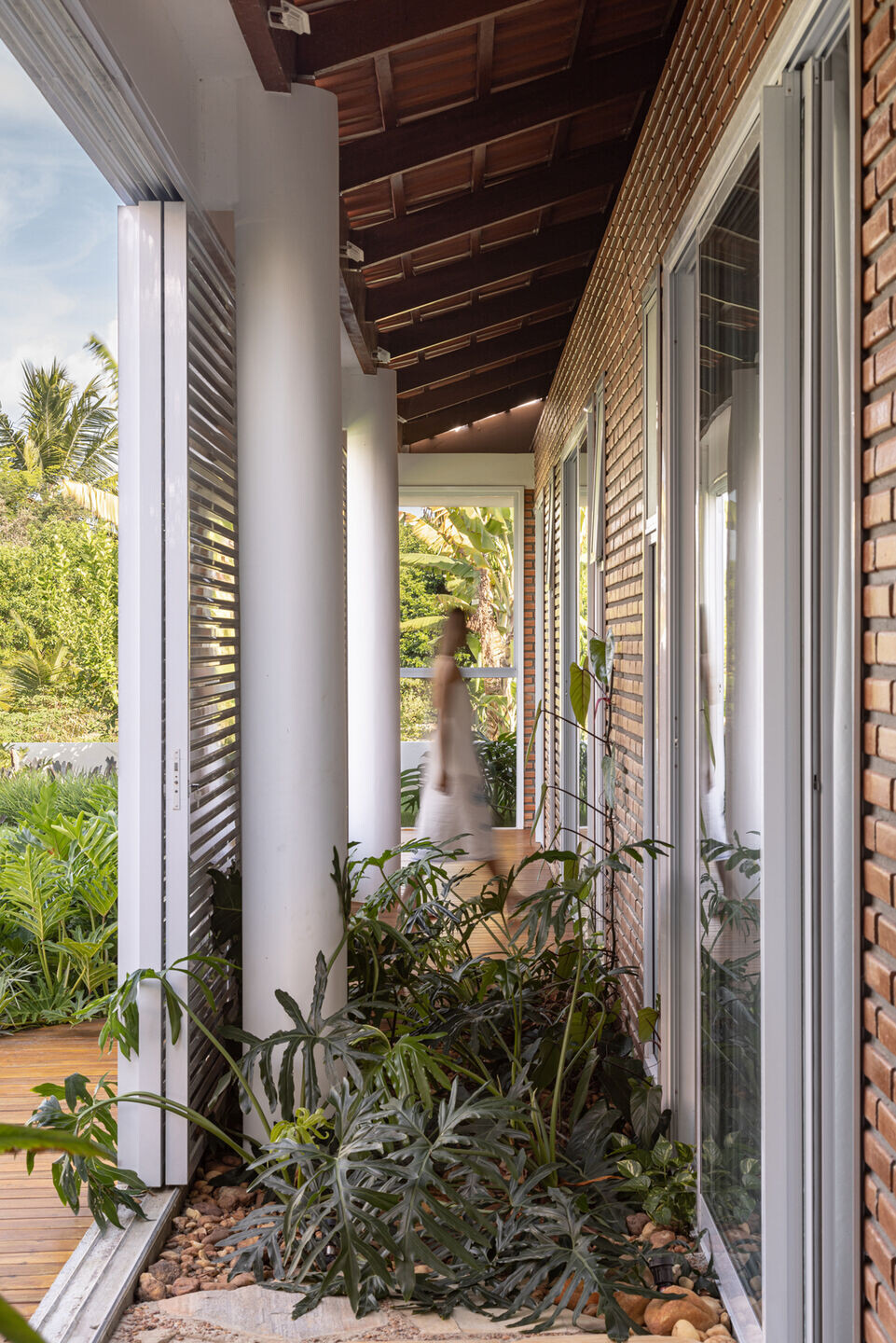
The movable brise-soleil were used in order to filter the solar incidence and also act as a fence for the house. Their permeability contributed to the fact that, even when closed, they kept ventilation inside the residence active.
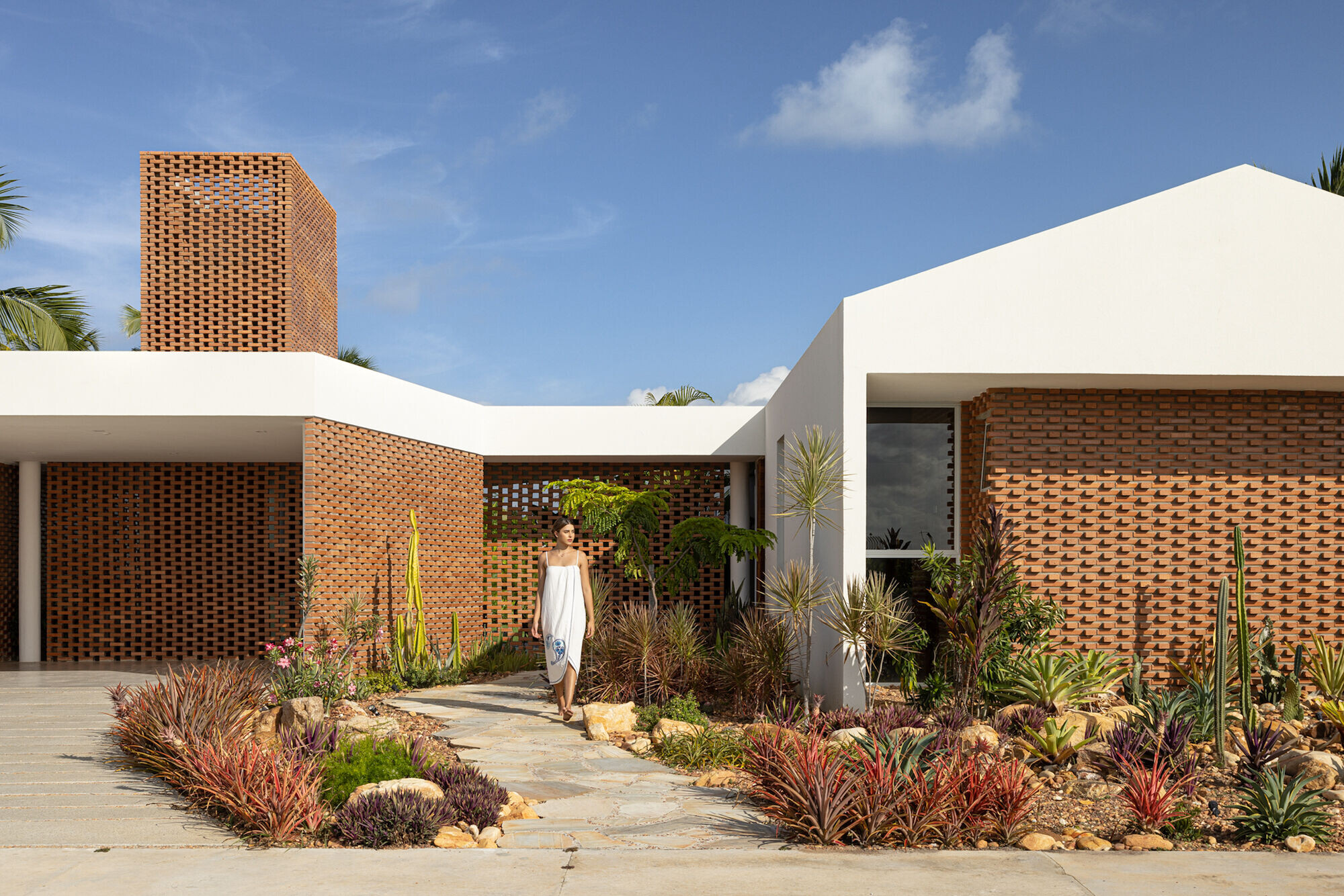
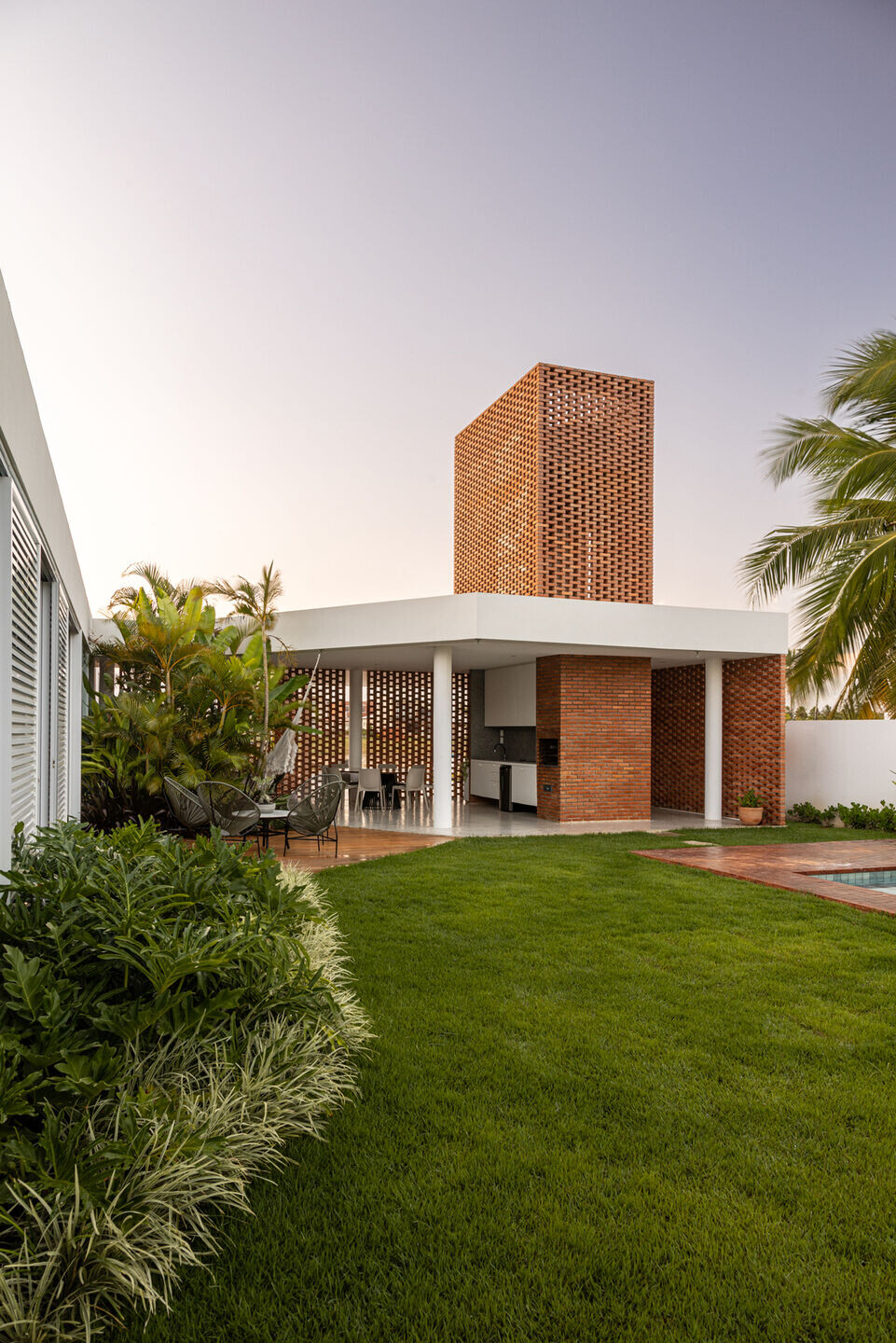
The landscaping permeated the internal and external areas of the house and developed in different ways in relation to the chosen species. Along the front façade, species with less water requirements and adapted to drier climates and high insolation were chosen. Already in the internal and posterior part of the house, the species composed a garden of a more tropical nature that helped to design the permanence spaces and the transitional relations between the internal and external.
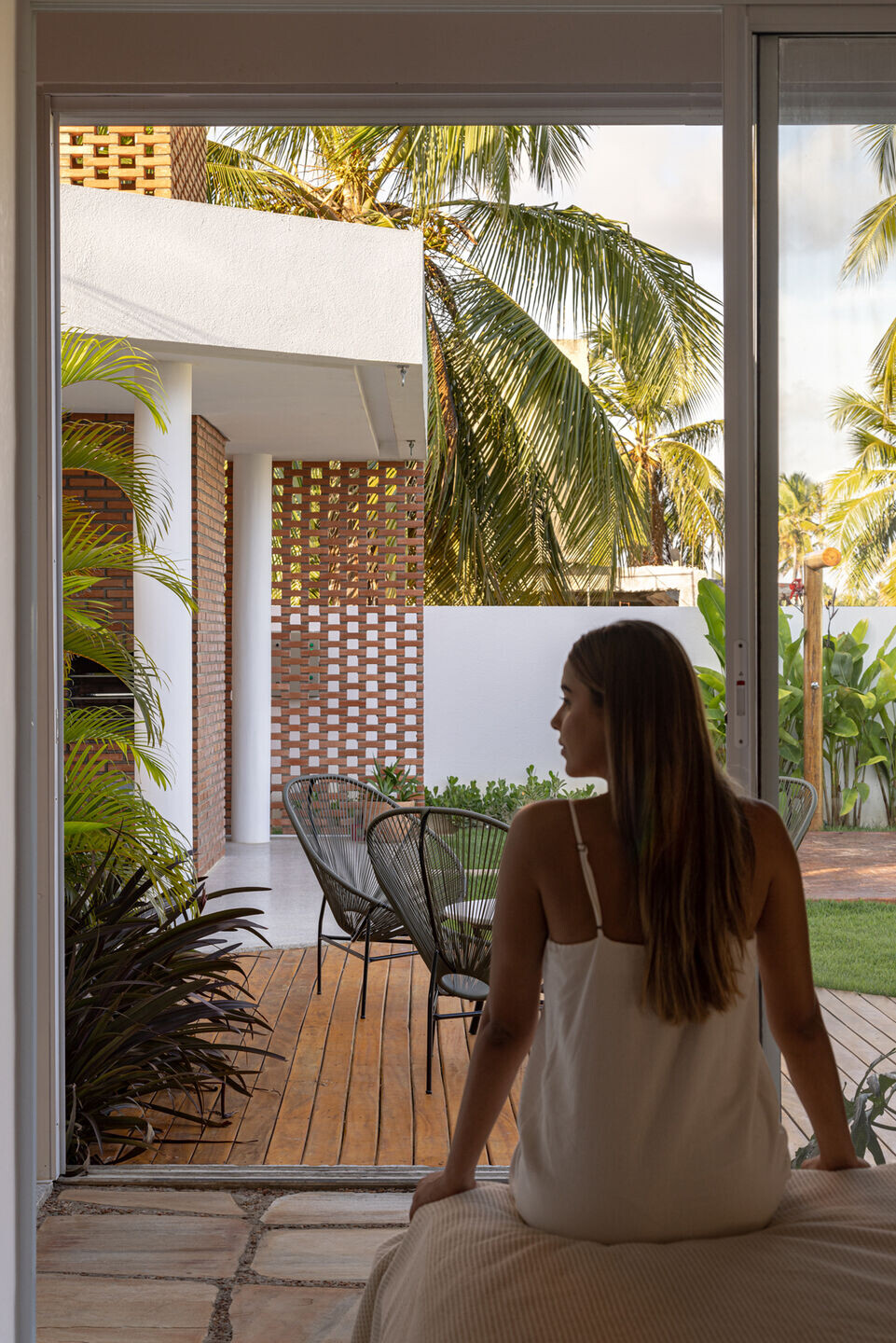
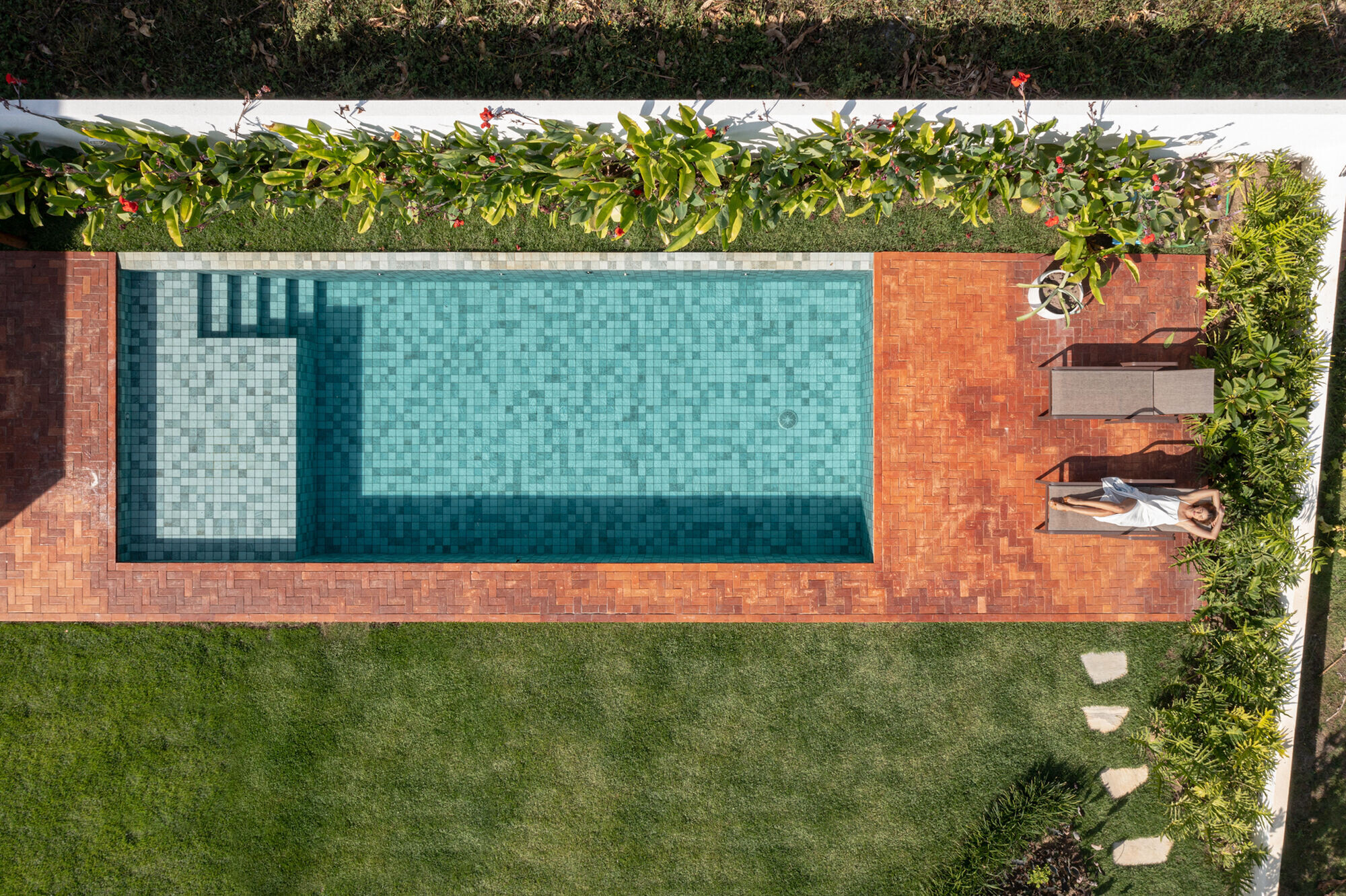
Team:
Architecture, Lighting & Design: Coletivo de Arquitetos
Landscaping: Coletivo de Arquitetos + Marcel Nauer
Air Conditioning, Structure, Construction Foundations, Electrical & Hydraulics: Novatech Engenharia
Construction: ARCON Engenharia
Photograph: Joana França
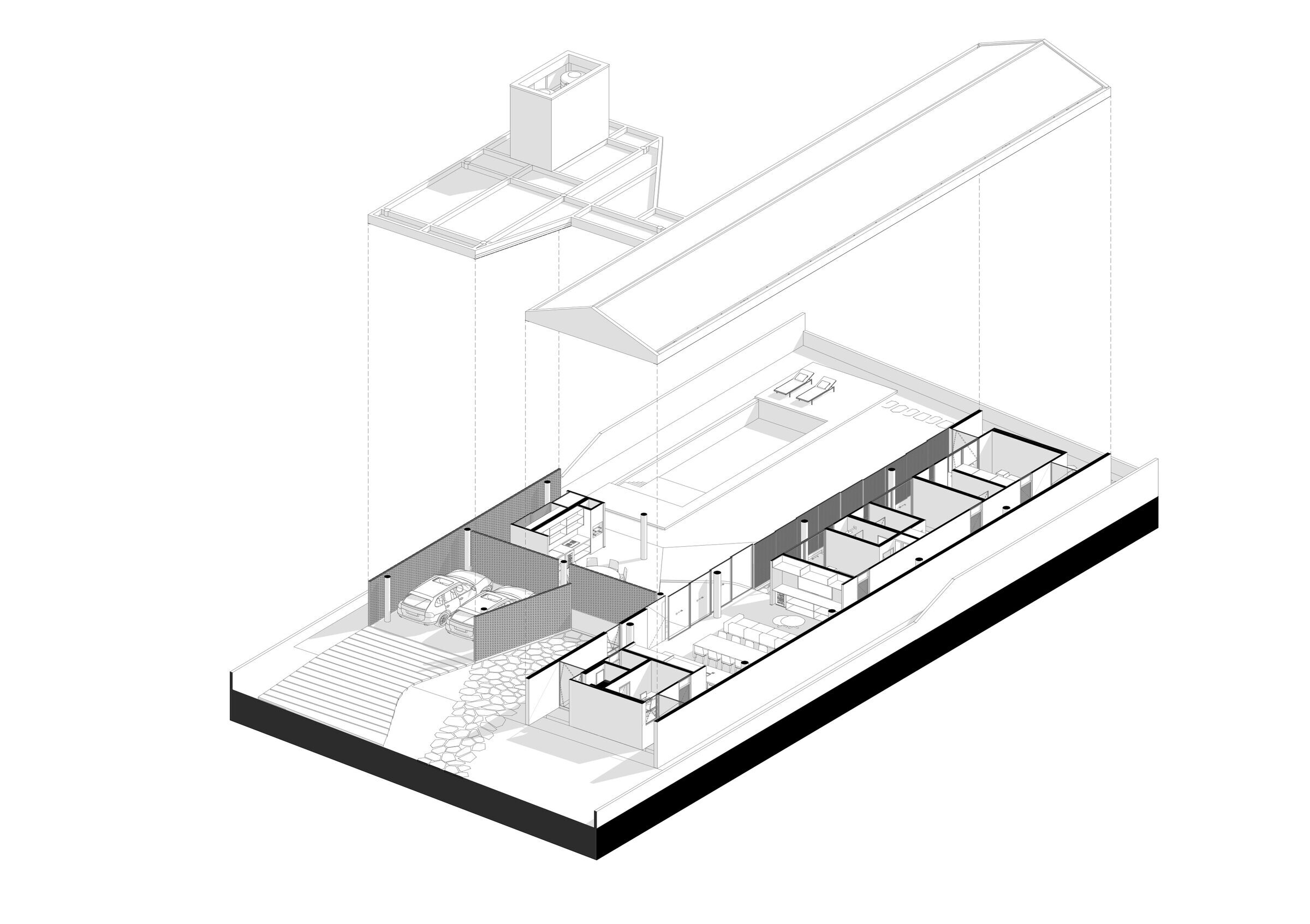
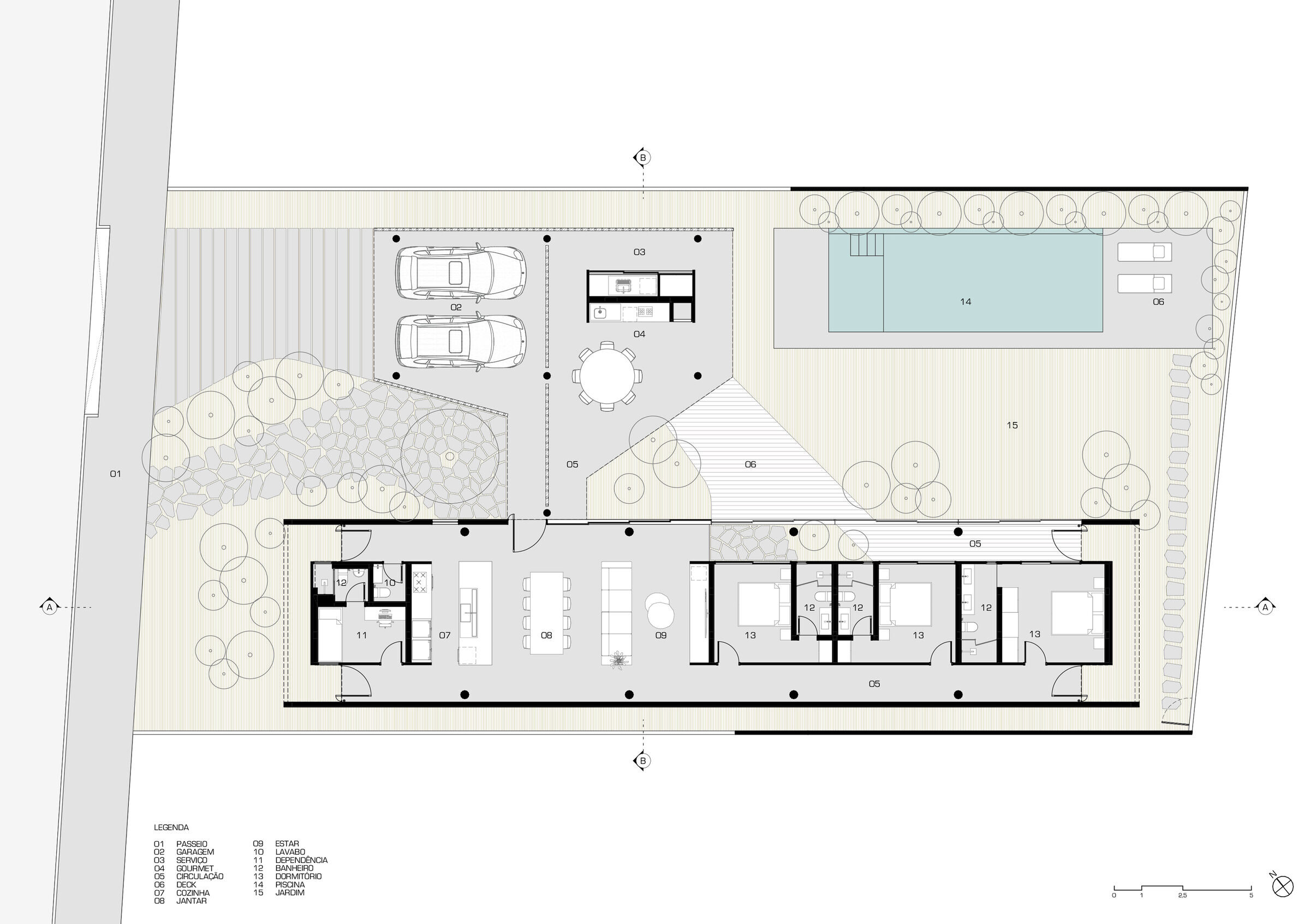
Materials Used:
Shades and frames: Alumif
Carpentry: Bentec
Luminaires: CIA da Luz
Granite: Prime Marbles
